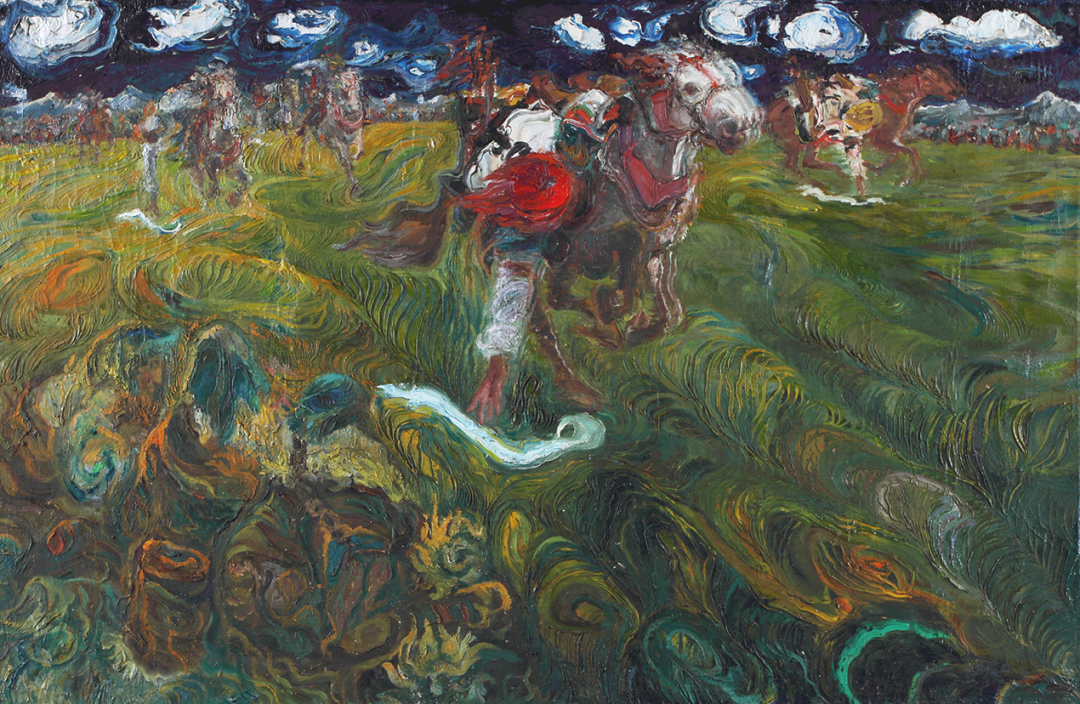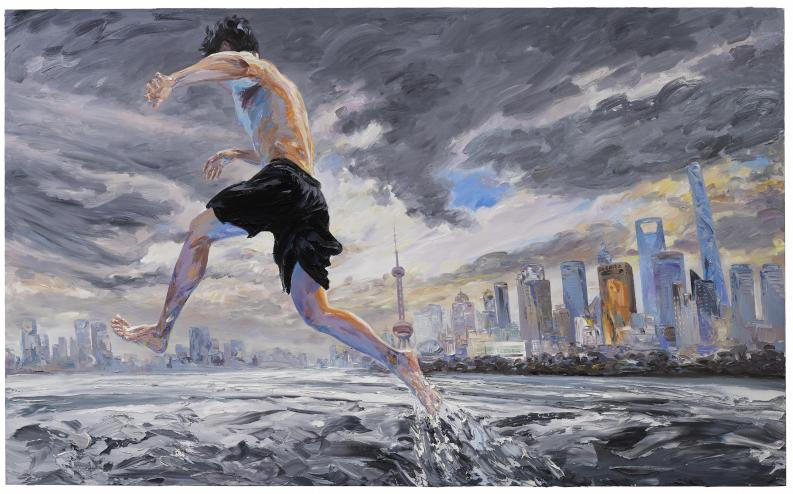|
EXHIBITION TITLE
Nomadic Golden Bough - Li Xinjian’s works exhibition
DURATION
2024.10.20 - 2024.11.20
VENUE
Hall 1-4, Wangqi Art Museum
Li Xinjian, represented by Triumph Gallery, presented his latest solo exhibition “ Nomadic Golden Bough - Li Xinjian's works exhibition ” on October 20th at Wangqi Art Museum. The exhibition, curated by Huang yunzi, features more than 50 pieces of the artist's work and will last until November 20th.
EXHIBITION PREFACE
TEXT / HUANG XUANZI
Nomadic life is an ancient way of human production and life, but “nomadic” is not only a way of life, but also a cultural phenomenon, symbolizing freedom, exploration and adaptation. We have been living in the city for a long time, and we are always envious of people who live in all directions! Because this way of life reminds people of “adventure”! Just as nomads are always on the move according to the change of seasons and the change of pasture, looking for a suitable place to graze their animals, non-nomadic people think that this behavior is full of the meaning of the unknown and exploration in the face of such a day. This kind of semi-isolated life attitude also gives them a kind of mysterious and romantic color, as if they are living in the real world of “freeloaders”.
But the life of the real nomads is not only adventure and romance, but also a deep understanding and respect for nature. This way of life not only demonstrates the adaptation and utilization of nature by human beings, but also reflects the wisdom of human beings to live in harmony with nature. So the romantic metaphor for nomadic life is not only because of its exploratory and isolated lifestyle, but also because of the free spirit and deep understanding and respect for nature that it represents. This lifestyle reminds people of a marvelous adventure across time and space, full of unknowns and romance.
Artist Li Xinjian's exhibition “Nomadic Golden Bough” stems from his creative journey and in-depth exploration of cultural symbols over the years. He wants to use this exhibition to develop a metaphor for his own creation! Li Xinjian says, “I have lived and worked in different places over the years, and I seem to be in a constant migration and nomadism.... British anthropologist James George Frazer's book “The Golden Bough” is a study of human religions, witchcraft, rituals and psychology, etc. It is similar to how I started from painting in Tibet, gradually expanding my artistic horizons, going out of Tibet, and traveling to different parts of the world to investigate and study the historical origin of the symbol “SWASTIKA”. The evolution of this symbol in different cultures and historical backgrounds has inspired me to think deeply about contemporary art.
Indeed it has! When you look at Li Xinjian's works starting from Tibet, then coming out of Tibet, and then traveling all over the world to study the origin of the SWASTIKA symbol, and to see the change of the word, you will be surprised that our understanding of the word is too narrow! The truth is that we are living in the midst of an ever-changing history. And art is a work that cannot be put down and requires constant thinking. What the artist ultimately wants to express through “Nomadic Golden Bough” is: let's do one thing first; go on a trip! Don't be too distracted, don't be in too much of a hurry, find a place where you can drink tea, take a break, drink wine and chat. Then idly cast those ready-made civilization fragments into volume, and then reintegrate them into a near-zenith, transparent, obelisk structure. In a unique way, the work deeply interprets the modern nomadic life and culture, and explores the connection between human beings, nature, history, and culture by using a variety of media and creative techniques, and presents human life with the theme of “Nomadic”. With the theme of “Nomadic”, the exhibition presents the state of human life in the midst of mobility and change.
With this exhibition, Li Xinjian tries to reawaken our thoughts on the ancient way of life of “nomadism”. Nomadic culture not only represents the wisdom of human beings to live in harmony with nature, but also symbolizes the resilience to adapt to environmental changes. This culture is not fixed, but is full of the ability to adapt and innovate. In this exhibition, Li Xinjian reminds us, through his artworks, that modern life is also a kind of nomadism, in which we are constantly migrating through history and re-examining the relationship between ourselves and the world. For Li Xinjian, art is not only a way of expression, but also a never-ending process of reflection. The creation of each piece of artwork involves countless reflections and explorations. Just like the nomadic nature, the artist's creative journey is also filled with the process of constant change and adaptation to reality.
The works in the exhibition reflect both respect for traditional culture and the artist's keen observation of modern life. Each work is like a fragment of time and space, reflecting migrations, cultural intermingling, and the fragility and resilience of individual life in human history.
The exhibition “Nomadic Golden Bough” is a dialog between the mind and history. Through the artistic lens of Li Xinjian, viewers will re-examine the times we live in and reflect on the role we play in the fluidity of culture and history.
|
 |





